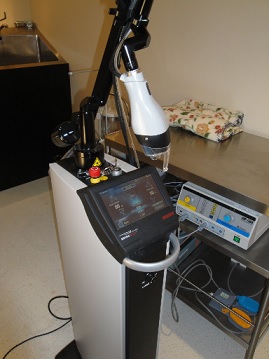One of the most effective acne treatments for patients who suffer from severe acne scarring is Isotretinoin AKA Accutane. In general, it takes 4 to 5 months for the medication to eliminate cases of acne severe enough to warrant the use of Accutane after all other treatment options have failed. It is also useful in treating acne that has not shown a complete response to creams or antibiotics. Accutane was approved by the FDA in 1982 for use as an acne medication. The American Academy of Dermatology has reported that 85% of patients who use Accutane have results that range from long-lasting to a complete reduction of acne.

How It Works
Accutane belongs to the retinoid medication class which includes drugs that are used in cancer treatments. In fact, the drug was originally marketed as a chemotherapy drug. Accutane works by controlling the oil located in the sebaceous gland and is most often used to treat acne with nodules that are 5-mm or larger in diameter. The dosage of Accutane taken by a patient depends on his or her body weight. As mentioned above, it can take up to 4 or 5 months for the treatment to eliminate the acne.
Side Effects
As effective as Accutane is for treating severe acne, it is also known to cause side effects that range from mild to severe.
Some of the milder, and most common, side effects include:
- Nosebleeds
- Dry eyes
- Cracked/Peeling skin
- Pain in the back, joints and muscles
- Fatigue
- Headaches
- Dizziness
- Swollen or Bleeding gums
There are also a number of serious side effects associated with Accutane and they include:
- Psychiatric disorders such as depression, aggressive behavior and suicidal thoughts
- Inflamed bowels
- Pancreas inflammation
- Pseudotumor cerebri (a buildup of pressure in the skull that mimics a brain tumor)
- Bone loss
Birth Defects
Accutane has been known to cause birth defects in women. As far back as 1985, the FDA added a black box warning telling pregnant women (or women who hope to become pregnant) not to use Accutane because of possible birth defects including fetal deformities and potential fetal death. These potential birth defects can happen even if Accutane is only taken for a short period of time by a woman who is pregnant. Some of the serious birth defects that can occur include:
- Eye and ear abnormalities
- Cleft palate
- Problems with the heart and brain
- Facial dysmorphia
- Central nervous system malformations
- Fetus death
Interactions with Other Drugs
Anyone who uses Accutane should be aware of how it interacts with other drugs. Patients need to consult with a board-certified physician before making the decision to actively use Accutane. While the label on the medication informs patients of the lengthy list of interactions, here are some of the most common interactions associated with Accutane:
- Vitamin A – Toxicity can be the result if used with Accutane
- John’s Wort – Taking this product while also using Accutane can decrease birth control effectiveness and lead to pregnancy
- Tetracycline – When combined with Accutane, the risk of pseudotumor cerebri increases
- Phenytoin – Since this drug can cause low mineral density in bones and Accutane can cause bone loss, the two should not be taken at the same time




 Scars are immensely varied and come in all shapes and sizes. Surgery remains the best option for more severe scars, other scars can be treated with the advance development of lasers for dermatological use. Treatment of scars with laser has steadily grown, giving both patients and physicians more flexibility to determine the best method of treatment.
Scars are immensely varied and come in all shapes and sizes. Surgery remains the best option for more severe scars, other scars can be treated with the advance development of lasers for dermatological use. Treatment of scars with laser has steadily grown, giving both patients and physicians more flexibility to determine the best method of treatment.
 Your treatment options vary based on the type and degree of scarring and can include:
Your treatment options vary based on the type and degree of scarring and can include: